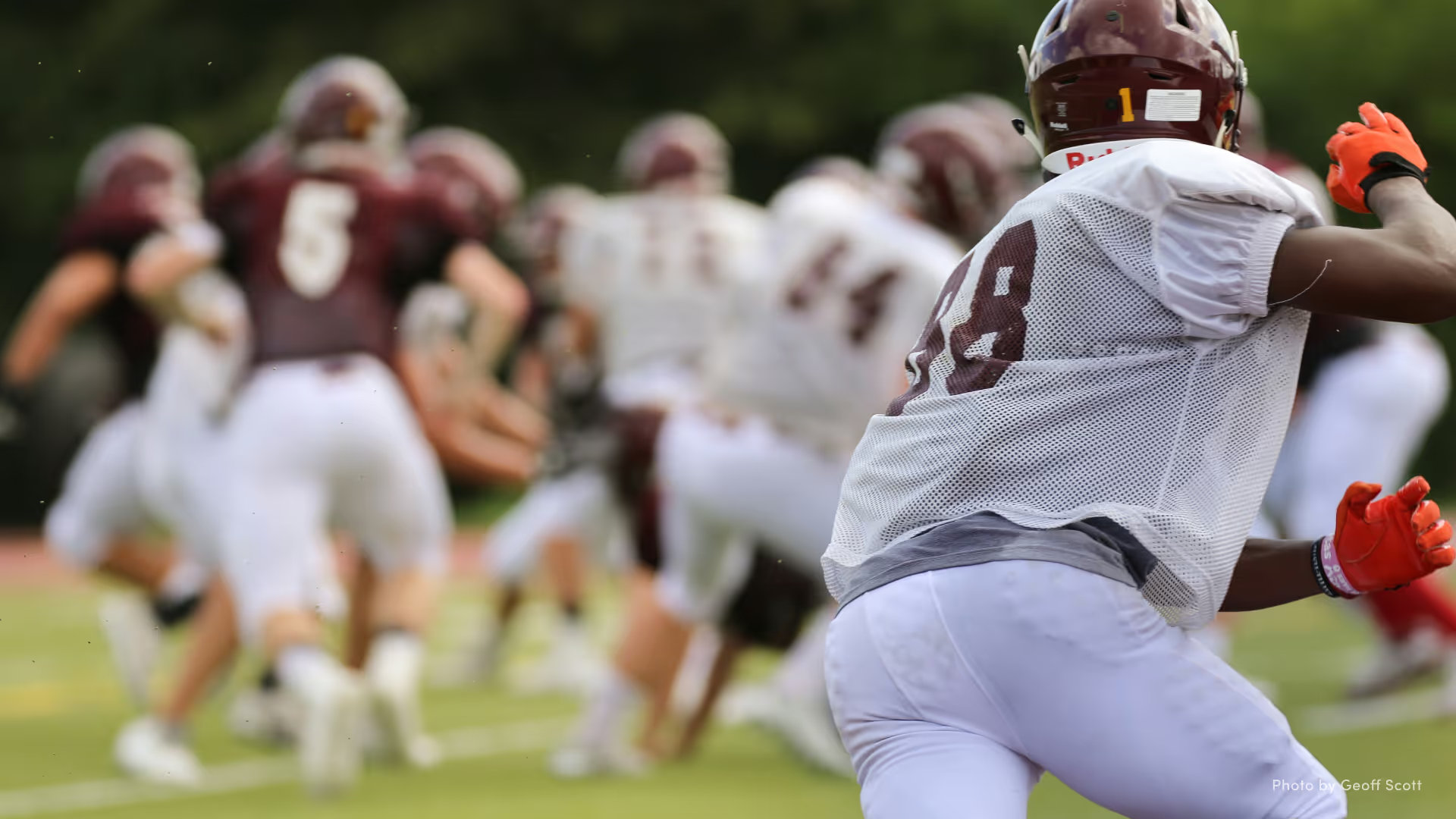
Sports photography is about capturing “the moment” and all of the raw emotions that come with it. Whether the moment is a loss, a win, a goal, or a save, sports bring out the full spectrum of human emotion. There’s passion and intensity with every move, so it's important to be ready to “tackle” everything that comes your way.
Below you’ll find 6 things to know and keep in mind that will help you capture the perfect sports photography shots, whether you’re wanting to immortalize your kids’ tournaments, sell to sports fans, or you’re simply doing it for the love of the game.
The right camera mode and settings are crucial for all forms of photography, but maybe even more so for the fast-paced world of sports photography, where every second counts. The most important settings and functions to understand and know how to use when shooting motion are aperture priority, burst or continuous shooting mode, shutter speed, and ISO.

You’re likely already watching videos of the sport you’re about to photograph, but have you considered going to YouTube, TikTok, and Instagram to study videos of key players, and to get a better understanding of the game? By watching videos the athletes post of themselves, or that fans post from the sidelines, you can learn what parts of the game are important and worth looking out for.
Being familiar with the game is important. Without knowing the game, you won’t know where to stand or what the right angles are—and knowing the behaviors of the players themselves will give you a better chance at knowing where to be at the right time.

Professional photographers adjust and shift depth of field with muscle memory, but not all of us are pros. And even pros can be caught off-guard with sports photography because they cannot control where athletes are on the field, how a coach instructs their team members to form, or when a cyclist is about to sprint. They could want the subject in sharp focus and the audience in the stands blurred, but another object coming across their path will throw the entire capture off.
The first step is to create a list of situations with shots you’d love to capture, and the depth of field required as the scene could change. Next, watch team practices and scrimmages to get a feel for the distances you’re photographing at. Last is to set up at a location with tons of unknowns (local tracks are great for this) to get some practice adjusting your depth of field in real time.

If you don’t have an extreme team sports venue like BMX tracks or roller rinks, head to a location where the captures on your list could happen and see if you can develop muscle memory to hit the exact depth of field.
Depth of field and sports photography take practice, and when shifting camera settings becomes second nature, your photography will climb to new levels.
Much like the athletes themselves, being prepared for game day as a photographer is all about practice, practice, practice. Get a couple of friends to rehearse some specific plays and moves for you, and experiment with your positioning and angles while they “play.”
Now position yourself about the same distance from where you’ll be when you’re at the event, and try capturing the right moment without knowing what they’ll be doing.
Stadiums, coaches, and even players may ban flash photography from sporting events. Flashes can distract the players and negatively affect the game, not to mention it’s an extra piece of equipment that can delay your ability to capture the action quickly. See if you can visit the arena, track, or venue during events with the same types of lighting that will be available when you’re there, and practice shooting with the ambient light available.

Photography is full of surprises, and sports photography is one of the most surprising subjects to shoot. Someone could dive for a catch, or spring higher off a trampoline because of adrenaline, or launch further from a platform. Look for “action angles” where you can capture the distance, height, or a measure point to drive home the impact of the moment.
Try lowering your tripod or taking a shot from the ground up. See if you can access the roof and focus downwards to the field. Maybe you noticed a signature emblem or static team memorabilia like a championship flag in the background, and the athletes will be crossing by during the event. By lowering your camera even a foot you can capture the action with this signature symbol in the frame.
These angles help you capture a miraculous moment and gain recognition in the field with unique work. By standing out and being original, you can make a name for yourself.
Sports photography is all about practice, and these six tips will help you up your game.